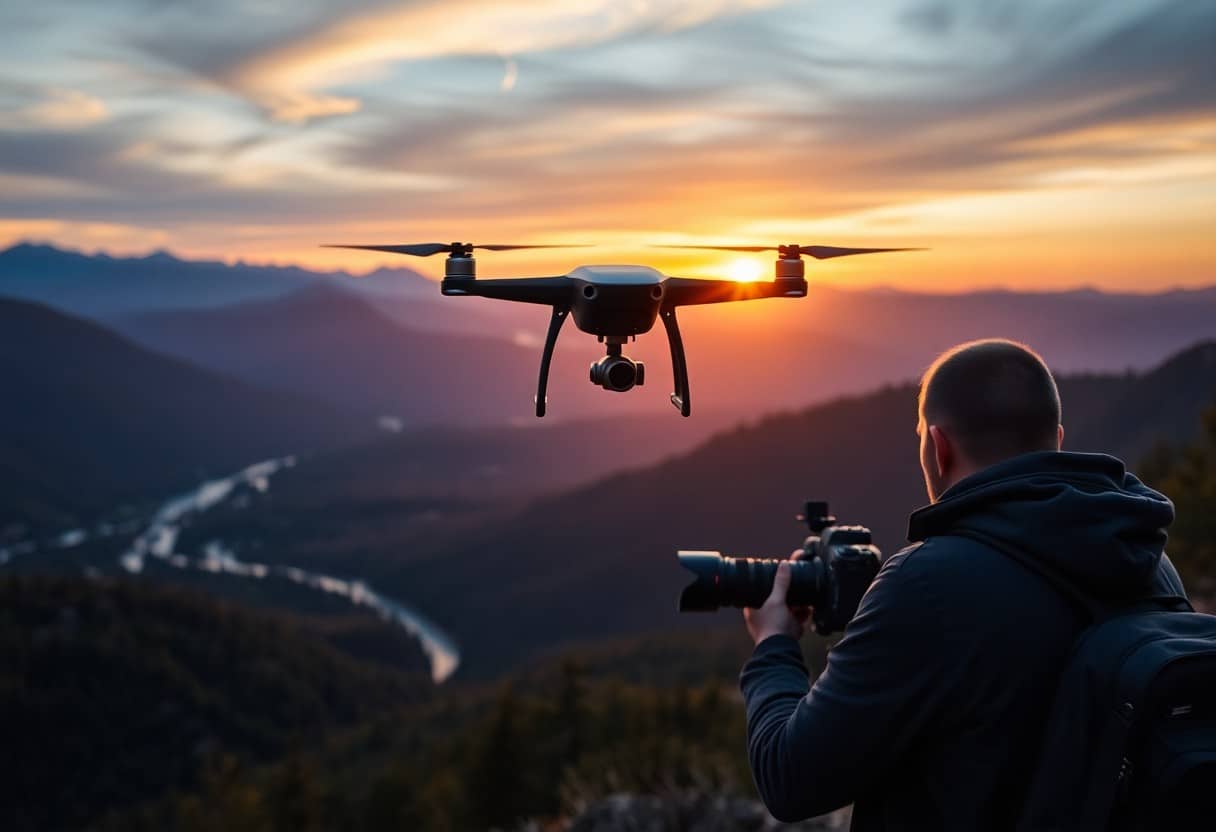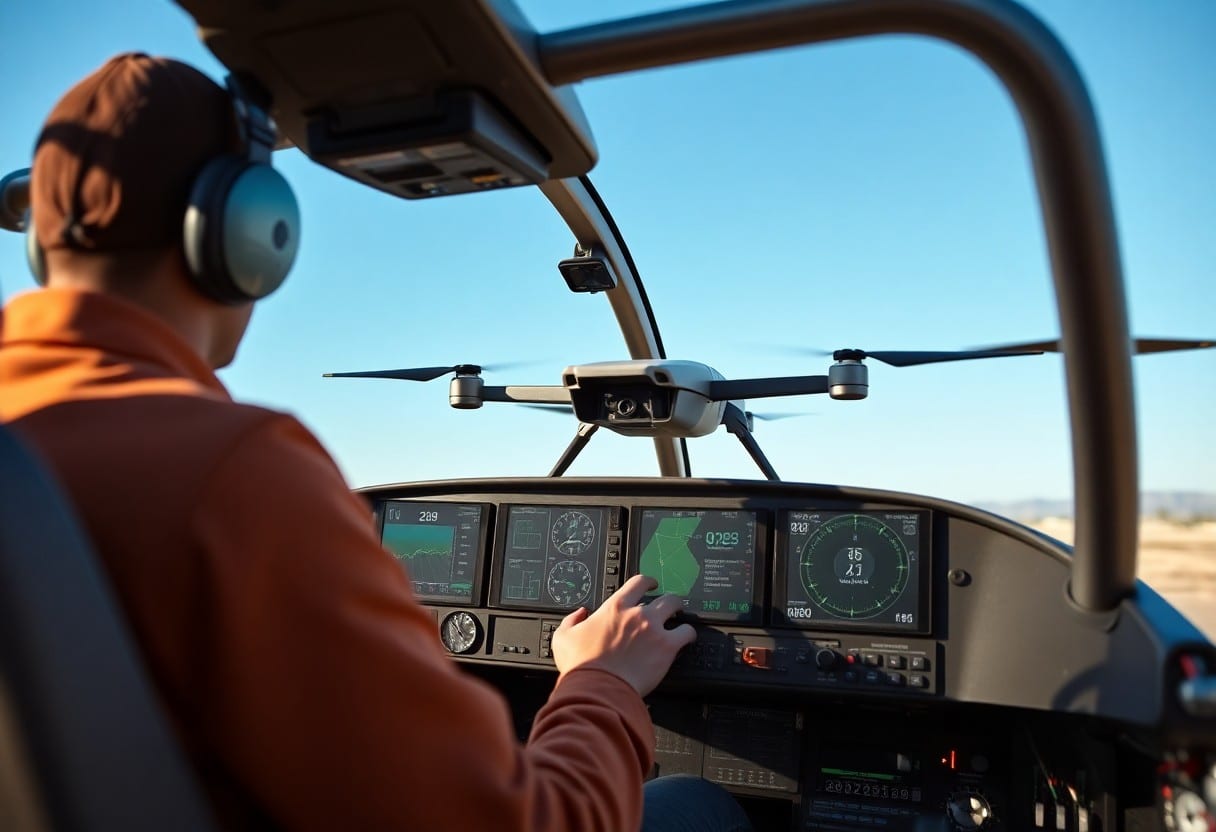How do different flight patterns affect your drone?
When operating a drone, understandDifferent flight patternsIt is critical to your flying experience. Each mode is designed to meet specific needs, affecting your control accuracy and stability. For example, selectStabilization modecan help you control your drone more easily, and theSports ModeThese modes provide greater flexibility and speed. However, these modes can also present greater challenges andRisksThis is especially true in complex environments. In this article, you will learn how to select a flight pattern that suits your operational needs to enhance safety and performance.
The main point:
- Flight Mode Types: Understanding the different flight modes (e.g., Normal Mode, Sport Mode, and Professional Mode) is critical to operating and controlling the drone.
- Improved security: Selecting the appropriate flight mode can improve the safety of drone operation and reduce the risk of accidents.
- Operational Flexibility: Different modes provide different operational flexibility, so you can choose the most suitable mode according to your shooting needs and environment.
- Flight Time: Certain modes may affect the drone's battery life and flight time and should be chosen with care.
- control accuracy: The Professional mode usually offers higher control accuracy and is suitable for fine shooting or riskier tasks.
- Operating Experience: Beginners should first familiarize themselves with the Normal Mode, so that they can gradually master the more complex flight modes.
- Environmental Adaptability: Selecting the appropriate mode according to environmental changes (e.g., wind speed and terrain) can improve operational stability and effectiveness.
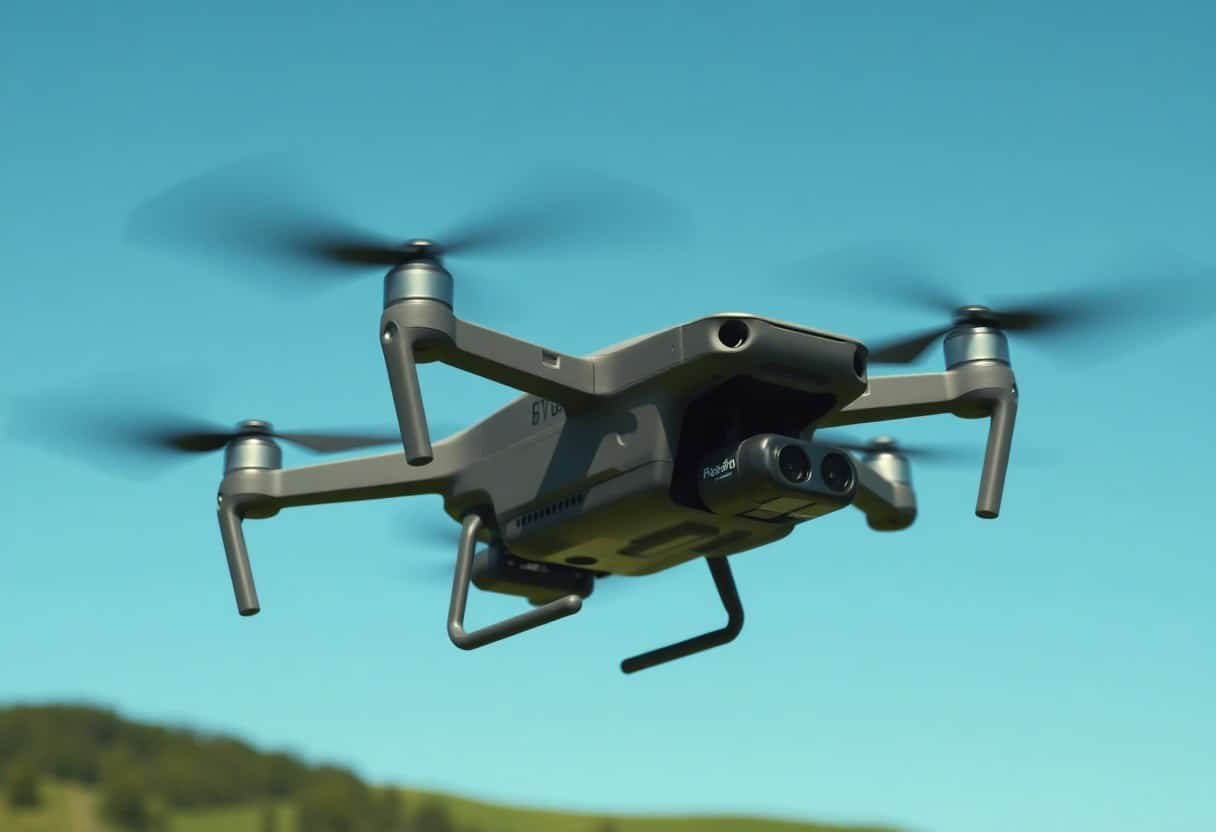
Understanding Flight Patterns
Understanding the different flight modes is critical to your drone operation. Each mode provides different control and stability that affects your experience while flying. Therefore, familiarizing yourself with these modes will help you choose the right settings for your mission and achieve the perfect camera angle and flight performance you want.
Stabilization mode
In Stabilization Mode, your drone will automatically adjust to keep flying smoothly, which is extremely important for beginners. This mode minimizes bumps and allows you to focus on what you're photographing without having to worry about frequent fine-tuning.
Manual Mode
Manual mode gives you complete control. When you choose this mode, you have to handle all the flight parameters by yourself, which means you need to have considerable skill and understanding of the drone.While this model provides greater flexibility, it also carries increased risk if not done properly.
In manual mode.You'll feel a unique kind of freedom.You can fly the plane as you wish. However, this also requires a high level of maneuvering skills.In the face of rapidly changing conditions, such as wind speed or obstacles, you need to react quickly.Therefore, it is recommended to select the manual mode after fully mastering the flying skills so that you can perform the task safely and effectively.
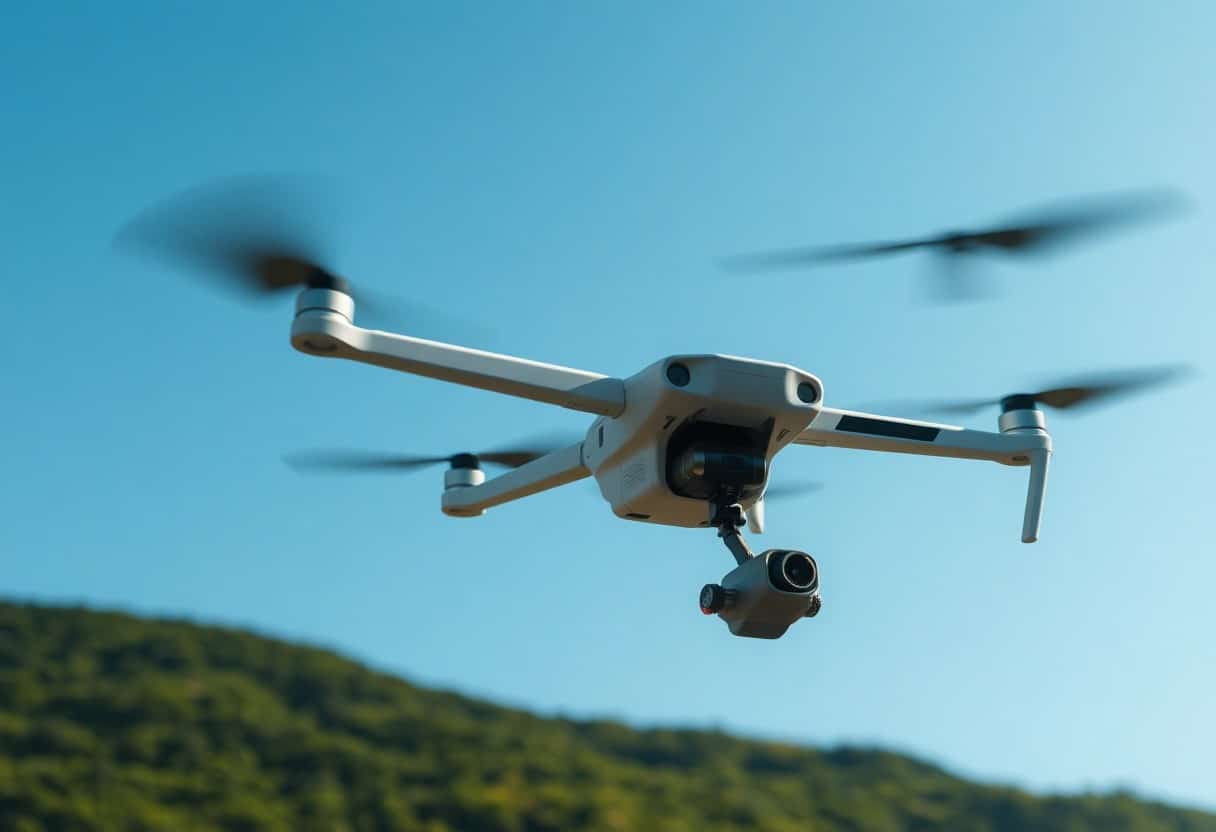
Effect of Flight Mode on Control
Different flight modes can have a significant impact on your drone's operational control. Whether it's Stabilization Mode or Sport Mode, these flight modes affect the agility and maneuverability of your drone, giving you better control on specific missions. Here's what you need to know aboutWhat basic drone controls should every new pilot be familiar with?More information can help you better understand the effects of these flight patterns.
Pilot Skill Level
Your skill level is critical when operating a drone. Experienced pilots are able to flexibly apply different flight modes to maximize the performance of the drone. On the contrary, beginners may find it difficult and therefore may not perform as well as expected in challenging environments.Drone Handling CapabilitiessufferSkill level of pilotsThis directly affects the stability and efficiency of the control. This will be reflected in the effectiveness of your task completion.
Environmental Factors
Your drone will perform differently in different environments. Factors such as wind speed, weather, and terrain can affect the choice of flight mode. For example, high wind speeds may require the use of stabilization mode to avoid losing control of your drone. Pay attention to theseEnvironmental FactorsIt can keep your drone in complex situations.Good controlThis will ensure that you can complete your tasks safely and efficiently. This will ensure that you can complete your tasks safely and efficiently.
- wind speedIt may cause the drone to lose its balance.
- Weather conditionsAffects the application of the flight pattern.
- topographicalThe optimal flight mode is determined.
Environmental factors play an important role in drone operations. High wind speeds can put drones at risk.Unstable operationThe risk of a drone being damaged by bad weather can affect visibility and control. Understanding these conditions can help you develop strategies to maximize drone efficiency and safety.Therefore, it is important to keep an eye on environmental changesCritical to drone control.
- take note ofenvironmental changes to maintain control.
- rely onEnvironmental conditions Select the flight mode.
- AssessmentWind speed and weather for safety.
Flight Mode and Camera Performance
Different flight modes affect the performance of your drone's camera, especially in terms of shot quality. InHow to prepare for the drone authorization process?In ATTI, you'll learn how to shoot effectively in ATTI mode, a GPS-independent mode that gives you more flexibility in windy conditions and helps you control the camera to capture more artistic images.
Aerial Photography
When taking aerial photographs, you need to select the appropriate flight mode to achieve the best results. Use theStabilization modeHelps you get a smooth image, especially when shooting still scenes, so you can minimize image shake and improve picture quality.
Photography Tips
Effective photography skills involve control of the drone and an understanding of the different flight modes. UseSports ModeWhen taking fast-moving photos, you need to ensure the stability of the drone to avoid blurring of the image. In addition, experimenting with different flight altitudes and angles can also help you capture unexpected and amazing images.
Proper planning and practice is the key to success in photography skills. You can change the speed and altitude of your flight to capture different angles of view, which will add layers to your work. At the same timeKeeping track of the lightIt is also important, especially at sunset or sunrise, to be able to capture more beautiful images through different flight modes to enhance the overall quality of your work. Last but not least, maintaining a sense of risk and taking precautions can help you avoid unnecessary accidents.
Safety Considerations in Different Flight Modes
It is important that you are aware of the safety considerations that will affect your drone's operation in the different modes of flight. Each mode has different handling characteristics and risks, so you need to carefully evaluate your surroundings and the capabilities of your drone before choosing a flight mode to ensure safe flight and minimize the risk of accidents.
Emergency Procedures
In the face of an unexpected situation, you must have emergency procedures in place to ensure your safety and that of the drone. This includes quickly switching to return-to-flight mode or manual control in the event of an uncontrollable situation, and making sure you are familiar with all possible emergency measures so that you can respond quickly if needed.
Avoiding Obstacles
When conducting drone flights.Avoiding ObstaclesIt is extremely important to prevent collision or damage. You must remain alert and aware of your surroundings at all times, especially when flying in complex or confined spaces. Carefully planning your flight path and using the drone's obstacle avoidance system can help keep the drone safe.
In order toEffective avoidance of obstaclesYou should conduct regular environmental inspections, especially before flying. Whether it's trees, tall buildings or power lines, these can all be potential hazards. Using your drone's visual aids and properly adjusting your altitude can help you maneuver your drone better and avoid accidents. Additionally, maintaining a reasonable flight speed will give you more time to react and further enhance your safety.
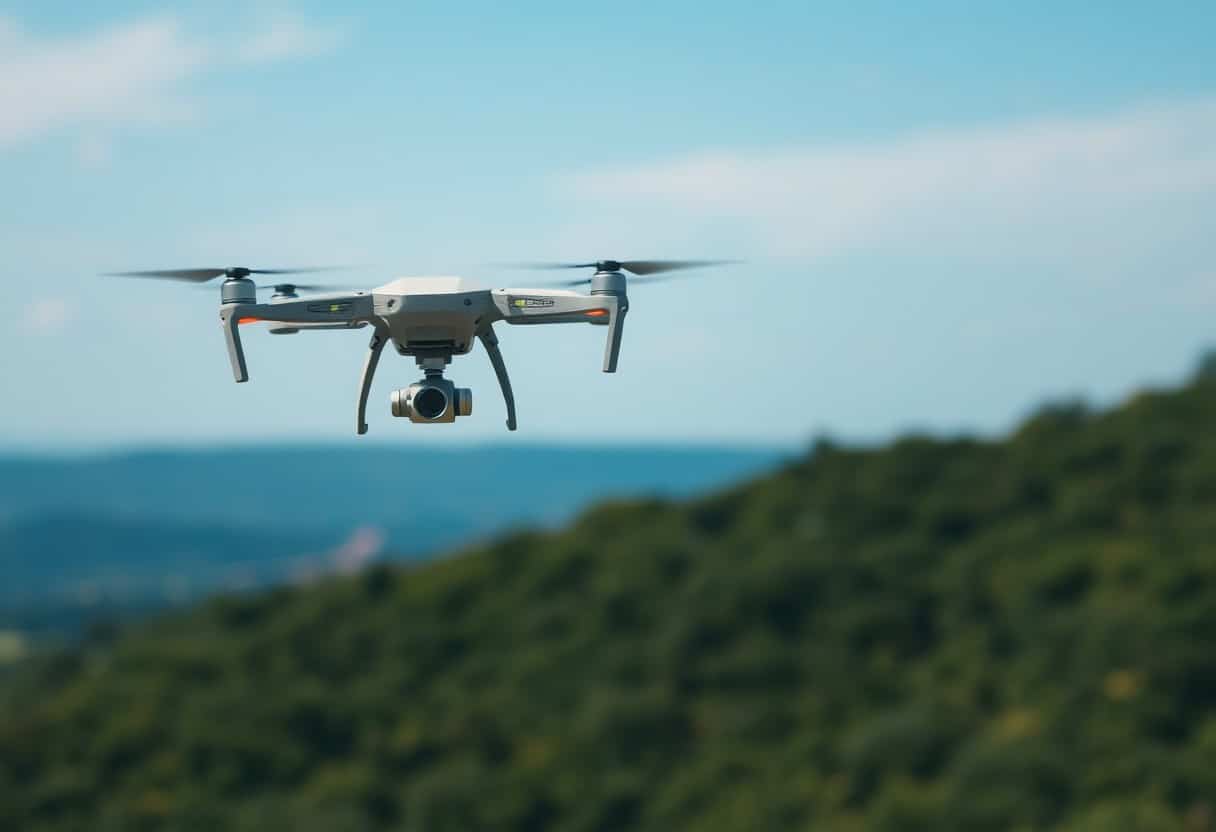
Advanced Flight Mode
In modern drone operations, theAdvanced Flight ModeThe flight experience and photography can be enhanced effectively. Each of these modes has its own characteristics to meet the needs of different situations.
| Flying Mode | Functional Description |
|---|---|
| GPS mode | Stabilizing the position of the drone with GPS signals facilitates precise control. |
| Follow Me Mode | The drone can automatically track and photograph you or other targets. |
GPS mode
utilizationGPS modeThe drone is able to maintain stable flight through signals when flying, ensuring that your drone is protected from the wind, whether in complex environments or outdoor scenes.
Follow Me Mode
existFollow Me ModeThe drone automatically tracks your movements to ensure that you remain visible in the frame, making it ideal for shooting sports or exploring.
This mode uses your cell phone or other device to send location data, and the drone automatically adjusts its position based on that data. This allows you to focus on the activity without having to worry about photography, providing the clearest possible viewing angle. It's important to note that when usingFollow Me ModeMake sure your area is clear of obstacles to avoid drone collisions.
Choose the flight pattern that suits your needs
When selecting a flight mode, you will need to consider your maneuvering needs and skill level. If you are a novice, you may want to choose the Auto Level mode, which will help you maintain stability and minimize accidents. If you want to challenge yourself and experience a higher level of flexibility, you can refer toChange Your Lens - 8 Steps to Cinema Drone PhotographyUse them together so you can learn flying skills while enjoying the thrill.
Recreational Use
For recreational users, choosing a flight mode that is easy to master is key. Auto-level mode is the best choice because it helps you focus on shooting and enjoying the flight without worrying about possible problems with the controls.
Professional Applications
If you're involved in professional video shooting or mapping, for example, you'll need to choose a flight mode that suits your professional needs. For example, you can use Acro mode for dynamic photography to capture more attractive images, but be careful!RisksThe reason is that in these modes you need to have a higher level of control over the airplane.
Professional applications place high demands on the pilots, so choosing the right flight mode is especially important. UseSuitable Flight PatternsEnhance your work efficiency and ensure precision and stability. For tasks that require precise positioning, you may choose to use Auto Horizontal Mode to ensure image stabilization, while Acro Mode allows you to perform more complex flight maneuvers in confined spaces for on-site shoots that require flexibility.Understand the characteristics of each modelWe can help you perform your professional tasks better and avoid unnecessary risks.
How do different flight modes affect your drone operations?
Understanding the different flight modes is essential to improving your drone handling skills. Each mode has its own specific purpose. For example, the Beginner mode is suitable for novices, while the Professional mode allows for greater control and flexibility. Choosing the right mode for your needs can help you complete your shooting tasks more accurately, improve flight safety, and increase your adaptability to the environment, so utilizing these flight modes flexibly will make your drone operation smoother.
Frequently Asked Questions
Q: What are the different flight modes?
A: The different flight modes include Stability Mode, Experience Mode, Professional Mode and Sport Mode. Each mode provides different control sensitivity and flight response, suitable for different usage scenarios and flight needs.
Q: How does Stabilization Mode affect drone operation?
A: Stabilized mode is usually the main mode used by novice pilots, it allows the drone to automatically maintain a stable flight state and reduces the effects of wind. This makes photography and video recording more stable and suitable for capturing high quality images.
Q: How does the Experimental Mode affect drone operation?
A: The Experimental Mode is generally used for beginners to learn drone control skills. In this mode, the response of the drone is more stable and the range of control is limited to help pilots familiarize themselves with the basic operation of the drone, such as ascending, descending and turning.
Q: What types of pilots is the Professional Mode for?
A: Professional mode is for experienced drone pilots. This mode offers greater freedom and control, allowing for more precise maneuvering for complex aerial photography, filming and trajectory flight missions.
Q: What is the benefit of Exercise Mode for fast flight?
A: Sport mode allows the drone to fly at faster speeds and increases maneuvering agility. This is useful for people who want to do air races or take quick motion pictures, however, this mode can be challenging for novice pilots.
Q: Will the battery life of the drone be affected when using different flight modes?
A: Yes, different flight modes have an effect on the battery life of the drone. Sport mode requires more power and therefore the battery life may be shorter. Stabilization and Experience modes usually result in longer flight times and more efficient battery usage.
Q: What are the factors to consider when selecting the right flight pattern?
A: When selecting an appropriate flight mode, a number of factors need to be considered, including the flight environment, the purpose of the operation, the level of personal skill, and the performance parameters of the drone. Understanding the characteristics of each mode can help pilots make the best choice and ensure the safety and efficiency of the flight.
